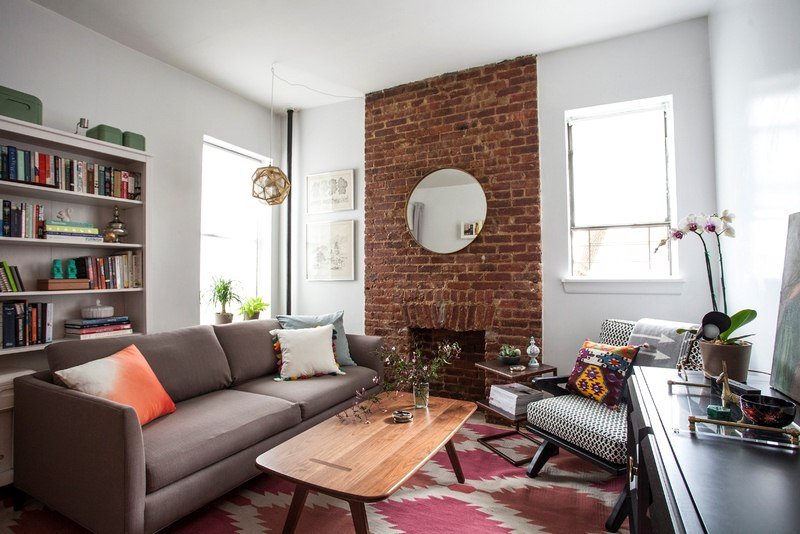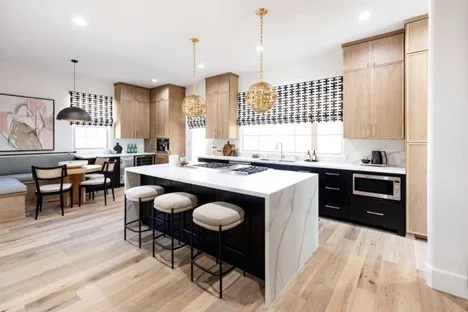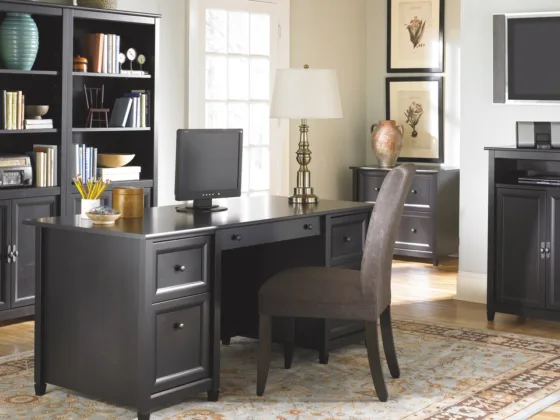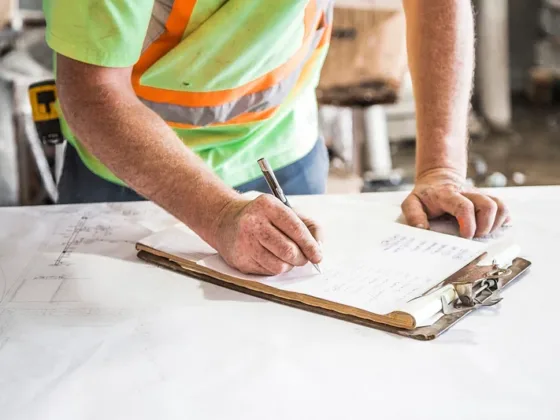Table of Contents Show

Downsizing to a smaller apartment can save you a lot of money in the long run, plus, it gives you a clean slate to decorate however you want.
Although, who’s kidding, it’s a lot of work!
From taking stock of your belongings to packing everything up, downsizing isn’t something that’s going to happen overnight.
But, with a little bit of dedication and applying a ‘never give up’ mentality, you can get through anything.
For starters, we recommend taking inventory of what you have, followed by prioritizing which items you can and can’t live without. Trust us, you think you know exactly what you own, but as soon as you start packing up your closet you’ll think otherwise!
In addition to assessing what you have and only keeping the necessities, we urge you to clear out the clutter. Sorting through the chaos before moving is going to make your life a lot easier.
So those are the basics, and that’s just the introduction. There’s so much more to come! To recap, the first steps are to take inventory, only keep the bare essentials, and ditch the clutter.
You’ll no doubt ace these basic three steps, which is why we’ll go on to reveal not only five tips, but five unique tips! These downsizing tips will no doubt help save the day.
Read Also:
Minimize Your Belongings
Downsizing is a craft, and you must treat it as such. Sometimes paring down to the essentials isn’t something you naturally know how to do.
If this sounds like you (because you think there’s just no way you can part with your stuff), there’s hope.
Instead of collecting stuff you don’t need (or think you need), consider only having one pair of black jeans or one board game instead of twenty, for example. (Okay, not twenty board games but you get the gist.)
If you use this technique to shed some of your belongings, downsizing will be a lot more doable.
So, to prepare yourself for the move, only keep 1-2 of the things for which you have multiples. Pairing down will help you minimize your belongings, and declutter.
Think of Ways to Consolidate
Decluttering doesn’t mean you have to donate the majority of what you own.
Living in a smaller floor plan means you will need to be clever with your space.
Think ahead of ways you can use what you currently have.
For instance, keep a vintage suitcase to store a few seasonal sweaters. Another idea is to use some containers that you were going to donate. Why not use them to store things under the bed instead?
Yet another idea is to save current over-the-door organizers to store accessories, shoes, towels, and other items.
In other words, don’t donate things that’ll help you organize stuff when you move.
Go for Quality over Quantity
Even though we’ve been stressing how vital it is to keep only the necessities, we realize it’s not always that simple.
If you’re a collector, for example, it may be hard figuring out what to keep and what not to keep.
But, instead of displaying an entire art collection in a cramped space, curate your collection down to the few pieces that’ll make a statement.
The same goes for furniture. You may have a lot of furniture, but it’s impossible to keep every piece. Only keep furniture that is multifunctional and aesthetically pleasing.
A few pieces of furniture you should consider keeping are nightstands with storage, bookcases, ottomans with storage space, and other multifunctional items.
As you’re packing, keep an eye out for well-made items that you don’t want to replace when you move. It’s much better to keep a high-quality item as opposed to having to spend money on a poor alternative later.
So when in doubt, keep newer and more durable towels and blankets and retire your favorite old and falling apart bedding.
Go on a Trip for a Reality Check
You’re probably wondering why this tip is in this article.
Hold on; we’re going to explain.
The basis of this article is all about decluttering and preparing for your new place, right?
Well, to figure out what the actual necessities are, you might consider going on a trip. If there isn’t time to fly on a plane, even camping or staying overnight in a hotel will do!
The point of this exercise is to figure out what you must have and what you won’t need. The idea is to get you thinking about what you need to live (well, maybe not survive in a literal sense), and what belongings you no longer require.
Nothing trains someone better for downsizing than packing only what you need for a few days or more.
This exercise should get you thinking about what you plan to keep. Plus, it’ll help you consider what you can use in the future that’ll serve multiple purposes.
Host a Packing Party
Hosting a packing party makes moving a lot more fun.
Have you heard of The Minimalists website? They have excellent packing party ideas. One is all about deciding what you want to keep with the help of your friends!
A packing party is a fun opportunity to invite friends and family to help you pack up your belongings as you socialize and enjoy good food.
With this method, your guests help you pack up all of your belongings a couple of weeks in advance of your move. Your friends get everything ready as if you were moving the next day (minus taping everything up, of course).
Most people only pack what they want to take with them; you will be doing the opposite.
How so?
Over the next couple of weeks, it’s time to “undo” what your friends and family members packed. You keep what you go looking for in the packed boxes.
As you unpack, only keep the necessities! And if possible, keep the things you want to keep packed in the same box with like items.
As for the remaining items, give them away, sell, or donate them!
By now, you should be feeling better about your upcoming move.
After coming up with a plan for downsizing, not only will moving to be a smoother process, you can look forward to living in a comfortable environment.
If all goes well, you’ll know exactly where everything will go and how to make use of your storage. Even if you have to donate a few more things when you move, it won’t be the end of the world.
Now pat yourself on the back; you did an incredible job at applying these unique secrets and downsizing your space!
Author Bio
Ryan Sundling is a Group Marketing Manager at Cardinal Group Management. He has over 10 years of experience in the student housing industry and works with Retreat at Tucson on a daily basis to help them with their marketing efforts.









